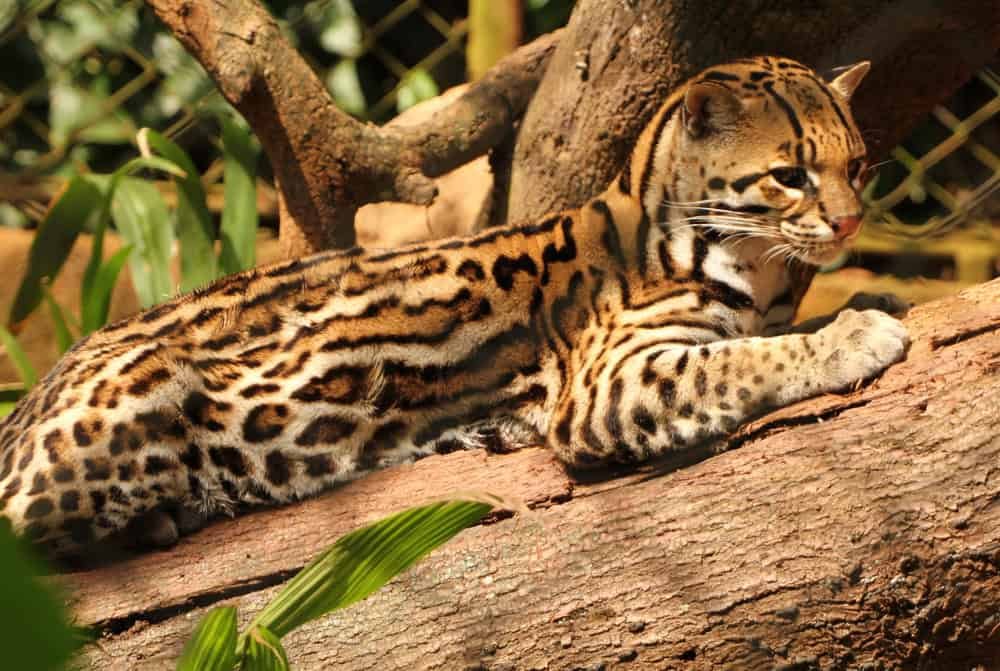Sometimes nature has a way of surprising us when we least expect it, and that’s exactly what happened earlier this year to Russ McSpadden, a wildlife conservationist with the Center for Biological Diversity. McSpadden was reviewing footage from a trail camera set up in southern Arizona when something extraordinary appeared on his screen—an ocelot. In a place where only a handful of these beautiful wild cats remain, this sighting was nothing short of miraculous. His reaction? Pure joy. And who could blame him? The discovery brings hope for a species that has been dwindling in the U.S. for years.
Who Are These Elusive Ocelots?

Ocelots are medium-sized wild cats known for their striking spotted coats, much like miniature leopards. These felines are native to the Southwestern United States, Mexico, South America, and even some Caribbean islands. Unfortunately, ocelots have become extremely rare in the United States, with only about 100 left. The reasons for their decline? Historic hunting and habitat loss have taken a toll on these majestic animals. Spotting one in Arizona is like finding a needle in a haystack, which is why McSpadden’s discovery is so thrilling.
Meet Lil’ Jefe: Arizona’s Lone Ocelot
For a long time, Arizona had only one known resident ocelot—an adventurous male named Lil’ Jefe. Lil’ Jefe has been spotted near the state’s southern border, but thanks to habitat fragmentation, especially the construction of the Arizona-Mexico border wall, he’s been cut off from other members of his species. Imagine being the only ocelot in town, with no other cats to hang out with. It’s been a lonely existence for Lil’ Jefe, and the chances of him finding a mate seemed slim—until now.
The Border Wall’s Impact on Ocelot Territory
The Arizona-Mexico border wall may serve many purposes, but for wildlife like ocelots, it’s an impenetrable barrier. According to Aletris Neils, executive director of Conservation CATalyst, the wall has almost perfectly split the terrain where male ocelots roam in Arizona from the areas where female ocelots live, about 40 miles south in Mexico. This divide makes it nearly impossible for the ocelot population to grow and thrive in the U.S.
A New Friend for Lil’ Jefe

When McSpadden spotted that ocelot on the trail cam, it wasn’t just any wild cat—it was a potential companion for Lil’ Jefe. The exact same ocelot had been caught on a different trail camera about a month earlier, over 30 miles away, in footage captured by researchers from the Phoenix Zoo. This little adventurer had crossed a river, a highway, and trekked through the rugged Sky Island mountain range, all in the span of a month. If that’s not determination, I don’t know what is! With this new sighting, it seems like Lil’ Jefe might finally have some company in the wild.
The Sacred Lands of the Tohono O’odham Nation
The trail cam footage was taken on the ancestral lands of the Tohono O’odham Nation, and the return of the ocelot to these lands holds deep significance for the local community. As Chairman Austin Nunez of the Tohono O’odham Nation’s San Xavier District put it, “Seeing the return of an ocelot to these ancestral lands reaffirms our sacred connection to this place and reminds us of our duty to protect these lands and the creatures that depend on them.” The ocelot’s return is more than a conservation success; it’s a powerful reminder of the bond between nature and culture.
A Month-Long Journey of Hope
This ocelot’s journey was no small feat. Traveling over 30 miles through harsh terrain, crossing rivers and highways, all in search of territory or perhaps even a mate, shows just how resilient these animals are. It’s a reminder that nature, even when pushed to the brink, still finds a way to survive. The hope now is that this brave ocelot isn’t the last of his kind to roam Arizona and that more ocelots will follow in his paw prints.
The Future of Ocelot Conservation

The Center for Biological Diversity is optimistic that these recent sightings will spark renewed efforts to protect the ocelot and its habitat. More sightings could mean more focus on the conservation needs of these animals. The hope is that with enough effort, we won’t just see one or two ocelots on trail cams—we’ll start seeing them more frequently in the wild. Protecting their habitat, addressing the impacts of the border wall, and ensuring that these beautiful creatures can roam freely are all essential to their survival.
The Hope of Seeing Ocelots Again
Russ McSpadden’s discovery offers more than just a fascinating wildlife moment—it offers hope. With any luck, this sighting will be the beginning of something bigger. Conservation efforts might ramp up, more ocelots could be spotted, and Lil’ Jefe might not be Arizona’s only ocelot for much longer. Here’s to the wild, resilient, and rare creatures like the ocelot who remind us that even in the toughest of circumstances, there’s always a reason to believe in the power of nature to bounce back.

Soham is from the rich tapestry of India, and has traveled through its several states and experienced its various cultures. Proud parent to three delightful feline furballs and looking to adopt more in the coming days. A self-taught writer who learned everything with experience. His path led him to a fulfilling profession spanning more than six years in digital marketing and writing along with a master’s degree in marketing. Knowing what interests readers motivates him. Filled with a profound fascination for the planet, his goal is to travel the world and discover everything from lush forests to towering mountains, sandy deserts to vast oceans, driven by a deep curiosity for our planet’s intricacies and beauty of creation.






